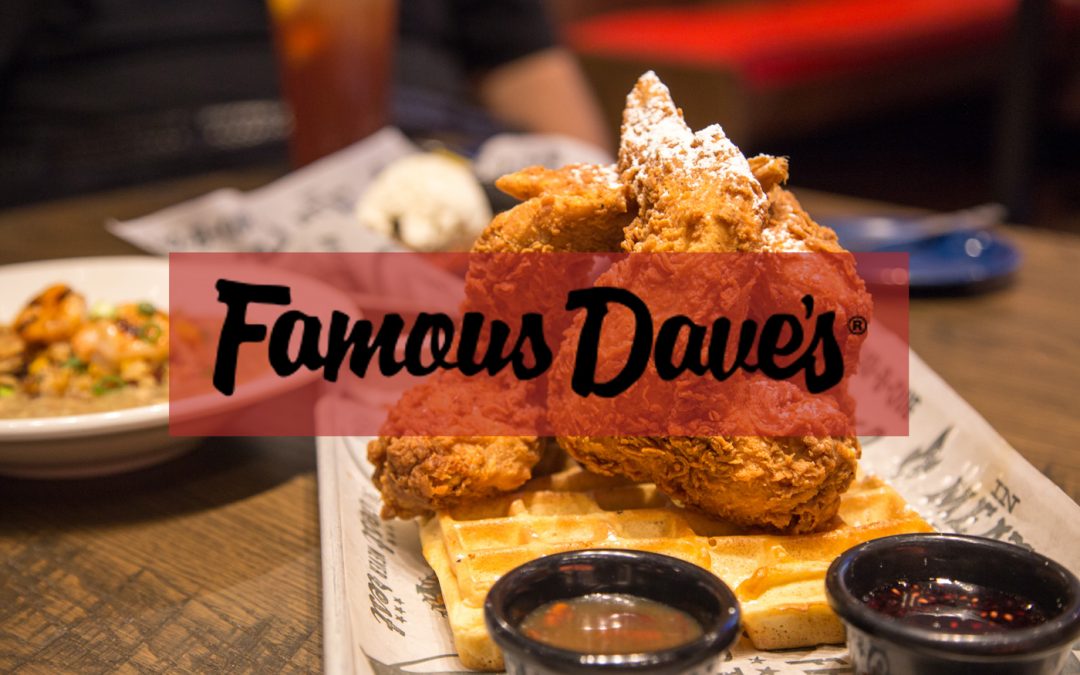Famous Dave’s is further expanding its virtual, delivery-only operations. Thus far, the sales through these channels have been good, and CEO Jeff Crivello said it puts the legacy barbecue concept back in growth mode without the expense of building large-scale facilities.
Back in September, Crivello explained how virtual operations and dual-branding helped “fill the gaps” that were carved through the casual-dining industry. Check out the past coverage for a look at how that’s helping make the economics work right now.
A new expansion with Bluestone Hospitality Group is the next step. The hotel and franchise group signed on for 25 virtual locations in the back of Johnny Carino’s, a casual Italian chain with saturation in the Houston area, but not a national footprint. Bluestone will also be plugging the Famous Dave’s menu into shared kitchens under the contract.
“It’s super exciting because it expands our footprint, there are locations in Texas, Idaho, Louisiana, Missouri, Kentucky, Indiana and California. It’s a nice spread, 25 units and the ghost kitchen variable to open them fairly rapidly for about $50,000,” said Crivello.
It’s a real (virtual) expansion for the 122-location brand that has not been growing significantly for years. It’s not the same as a big barbecue bar with a towering sign, but at $50,000, it’s a significantly lower price. According to the latest Franchise Disclosure Document (FDD) from the Famous Dave’s parent BBQ Holdings, building a traditional location costs between $481,000 to $2.9 million.
Crivello said the incredible shift toward digital and convenience may have formed a new stepping stone for traditional store growth as well.
“You get a really good indication of a market by doing the ghost first, getting strong demand you see that and you can expand from there,” said Crivello. “I would say you go from a ghost to a dual concept to building a full restaurant in markets where you have a lot of demand. It’s just like starting in a food truck, you have a line down the block from the truck and you expand from there.”
Of course, without a sign or a truck, all that will be done digitally. That’s where the power of a seasoned brand with a full-time CMO, a marketing team and an ad budget for local advertising puts this kind of expansion ahead of the food-truck entrepreneur. Crivello said most of that goes right into the platforms like DoorDash, Uber Eats and Grubhub.
It will likely be a fast push, as Crivello said he expects all 25 ghost kitchens to open in the next year before starting to test additional markets for future expansion. He added that building one brick-and-mortar location would take about as long as all 25 of those virtual locations.
Brinker, the parent company behind Chili’s and Maggiano’s Little Italy, is pondering the same thing with its Just Wings concept. In its latest earnings call, the company expressed interest in turning the virtual concept into a full-fledged brick-and-mortar brand. According company numbers, the virtual brand in the back of 1,050 corporate makes up about 4 to 5 percent of sales or about $27 million during the first quarter.
That might fill the gaps for Brinker, too, but the push into virtual is all about efficiency. Having a secondary operation in the kitchen tackles the two biggest costs for a restaurant operator.
“There’s occupancy, that’s a big one. You’re not renting another space; you’re just using latent capacity in your current restaurant. And you’re also using the labor that’s already in the restaurant,” said Crivello.
There is a strong counter point to the virtual brand frenzy, though. While virtual operations can target distinct customers and fill the gaps during COVID, it might not be enough to keep the lights on for large-format casual restaurants.
“I think there’s a lot of people looking at their dead space and seeing what they can do with a virtual brand. If a core brand doesn’t work to support your real estate, you’ve got a big problem,” said David Bloom, the chief operating officer at Capriotti’s who is taking a narrower approach to virtual restaurants. “I don’t think it’s the best use of real estate and I think long-term that will hold true.”
How exactly the virtual bonanza turns out—a growth engine or like the actual bygone Bonanza restaurant—will play out for some time to come.


